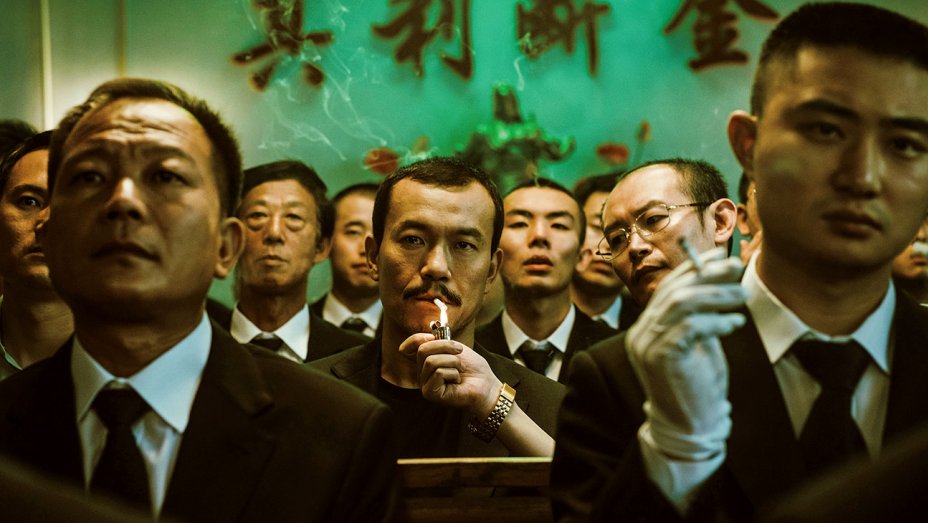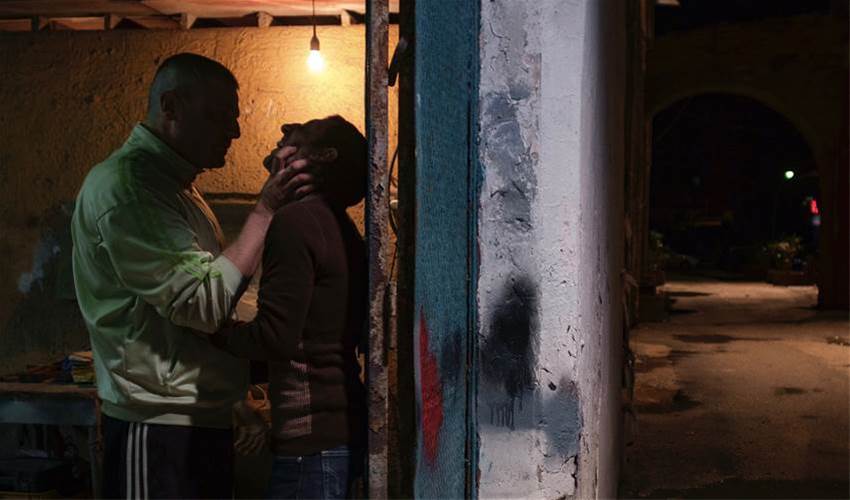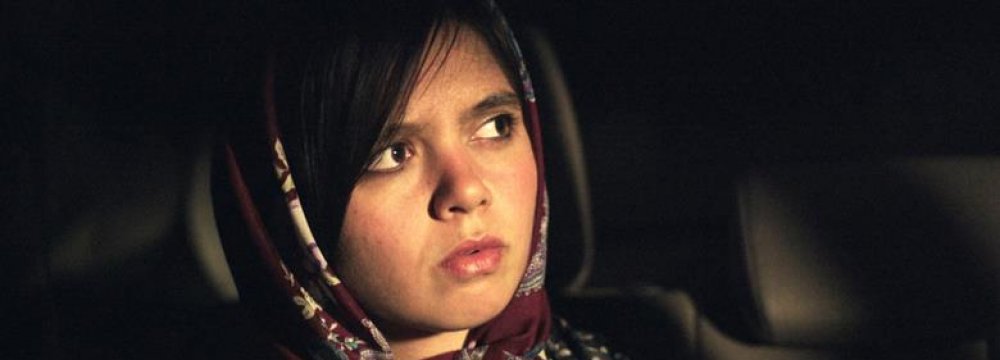6. Ash is the Purest White by Zhangke Jia

The lead figure of China’s sixth generation of filmmakers, Jia is regular in European festivals, having won a Golden Lion in Venice and several other prizes in Cannes and Berlin, though never a Palme d’Or. Neither did he this year, but once more he gained favorable critics for his new movie.
It is the story of a couple and their doomed love, settled into China’s crime world for a period that starts in 2001 and ends on New Year’s Eve 2018. The protagonist, Jia’s wife and muse Zhao Tao, is a tormented woman who has a love affair with Bin, a provincial mobster who believes himself to be more than he really is. His efforts to become the crime lord of the city, helping local businessman and rival gangs to settle scores, fail as new punks take control of the underworld. Faithful Qiao stands before him and the new gangs and is sentenced to prison to save him. When she is released, she tries to track him down in a city in Three Gorges, which faces imminent submersion due to the new dam that is to be built. When she does find him, a new relationship based on resignation and a peculiar sense of duty leads the two protagonists to the last part, long but full of deep transcribing of feelings.
Jia’s main concern still is how to depict the dramatic transformation China has gone under in the last decades. His constant referring to places of extreme natural beauty that are about to sink under the torrent of new state of things denotes that. Moreover, he reiterates the motive of the woman’s role in this new China, a woman deprived of both her traditional role of millennials and the role she had in Mao’s China, now charged to face challenges, provide solutions both for her and the men around her, and finally define the content and the meaning of new ethical codes.
An “unhurried, long-spun drama … with riveting performances by the two leads” (Hollywood Reporter), “a winding tale of love, disillusionment and survival” (Variety), we surely expect to see this movie in theaters!
7. Climax by Gaspar Noé

Noé, frequently called the enfant terrible of French cinema, “literally wants to show you hell on earth.” (Variety). His films are destined to shock and provoke. And he wants to remind us so, as we can understand from the poster of his new film where the verbs ‘despised,’ ‘hated,’ ‘loathed’ and ‘cursed’ prevail.
And he managed to freak us out again – according to the critics – as he films the three-day rehearsals of a group of 20 dancers in a closed boarding school in the middle of a forest. They put in the center of the room a pot of sangria spiced with LSD and what follows is a journey “from carefree joy to the abyss to despair” (Cinevue), in a way that only Noé is expected to do.
Playing in a “sex and drugs and rock’n’roll’ tune, with loud music as if it were a concert, ‘Climax’ highlights he’s capable of doing something a bit different and … he makes this film fun. Because this is Noé in fun mode, it’ll just test everybody’s definition of the word.” (Cinevue)
The film premiered in the Directors’ Fortnight section of the festival and gained the Art Cinema award.
8. Dogman by Matteo Garrone

A two-time winner of the Grand Prize of the Jury in Cannes, Garrone gives us a “frightening real portrayal of a good man tempted by the devil” (Hollywood Report). In this film, which could be considered a less violent sequel of “Gomorrah,” reigns the polarity between good and evil. A sweet, good-mannered man who grooms dogs for a living is tempted by a crazy brute from the southern Italian underworld to commit a series of crimes that will lead him to prison, letting him know that opening the door to hell is a one-way trip to devastation.
Though Simone is the one pole – the bad, criminal one – of this deadly pair, Marcello is the one the film focuses on: a spherical hero that completely transforms himself during the movie, from an innocent human being that is let to be carried. Is it kindness or just cowardice that dictates his moves? He becomes a a determined mobster, a ‘Rottweiler’ that comes out of the prison ready to join the underworld for good.
Apart from an astonishing cinematography that draws with the most appropriate colors the misery lived in the outskirts of Naples – and the outskirts of organized society – the movie is an acting recital given by Marcelo Fonte in the role of dog groomer, awarded with the Jury’s prize for Best Actor.
9. Three Faces by Jafar Panahi

Maybe the lead in no-budget cinema and another category that should be added – no-permission cinema? Banned cinema? Forbidden cinema? – Panahi managed to send his fourth feature since he was arrested and banned from directing movies, writing screenplays or doing anything that had to do with cinema, as the Iranian government accused him of propaganda against the regime. A world famous director awarded in Cannes, Berlin and Venice festivals, Panahi is now confined inside the borders of Iran, but still declares his restless will to make cinema in such a touching way that he turns an iconic figure of the movie world.
In the 2018 Cannes Film Festival, the Jury, Iranian director Farhadi and others pleaded with the Iranian government to let Panahi travel to France and attend the festival. With no success. One more award – Best Screenplay, tied with “Happy as Lazzaro” – without being present.
“Three Faces” is a feature with a plot, far more so than his previous “Taxi.” Famous actress Behnaz Jafari – playing herself – takes a desperate message from a young girl living in a remote village bordering with Turkey; the girl wants to study in Tehran to become an actress, but her parents want to have her married instead, so she intends to commit suicide. Shocked and terrified, Jafari travels with Pahahi – who also plays himself – through winding narrow roads on the mountains to the village in search of the young girl and her fate. Their contact with the villagers, however, won’t be an easy one.
Iranian directors work miracles at home. Panahi has forged his personal style in directing, revealing smooth details and acute contrasts that compose today’s Iranian society. And he does it at any cost.
10. Long Day’s Journey Into The Night by Bi Gan

Gan’s sophomore work was mostly praised for its cinematography, which was considered equivalent to Wai-Wong’s. “A fascinating application of filmmaking innovation” (Indiewire), ‘a shot that will be talked about, at least in cinephile circles … where he blend depth defying camera work” (Hollywood Reporter), “at the 70 minute mark … the remainder of the picture is one insanely choreographed long take” (Thrillist Entertainment).
So, it is a movie about film art enthusiasts. The story is simple. A man goes back to Guizhou to track down a woman who he had spent a summer night with 20 years ago. Melting romance and film noir, with obscure timelines and elliptical dialogues, I am sure this will be a “love or hate” movie.
This list could not be complete without the following mentions:
11. The Image Book by Jean-Luc Godard. Awarded by a Special Palme d’Or for the first time in Festival’s history, “the latest work from iconoclastic New Wave filmmaker mixes old film clips, documentary footage and politically charged voiceover.”
12. The House That Jack Built by Lars von Trier. A controversial – what else could von Trier make? – film that is “an alternately shocking and ruminative look at five murders from the perspective of the man who committed them.” (Indiewire)
13. Border by Ali Abbasi. “An exciting, intelligent mix of romance, Nordic noir, social realism and supernatural horror” (Variety). Un Certain Regard Award winner.
14. Arctic by Joe Penna. A first-time-filmmaker from Brazil in a survival thriller deep in the snow.
15. Capharnaüm by Nadine Labaki. The heart-wrecking story of an underaged boy who sues his parents in court for bringing him to life. Jury Prize.